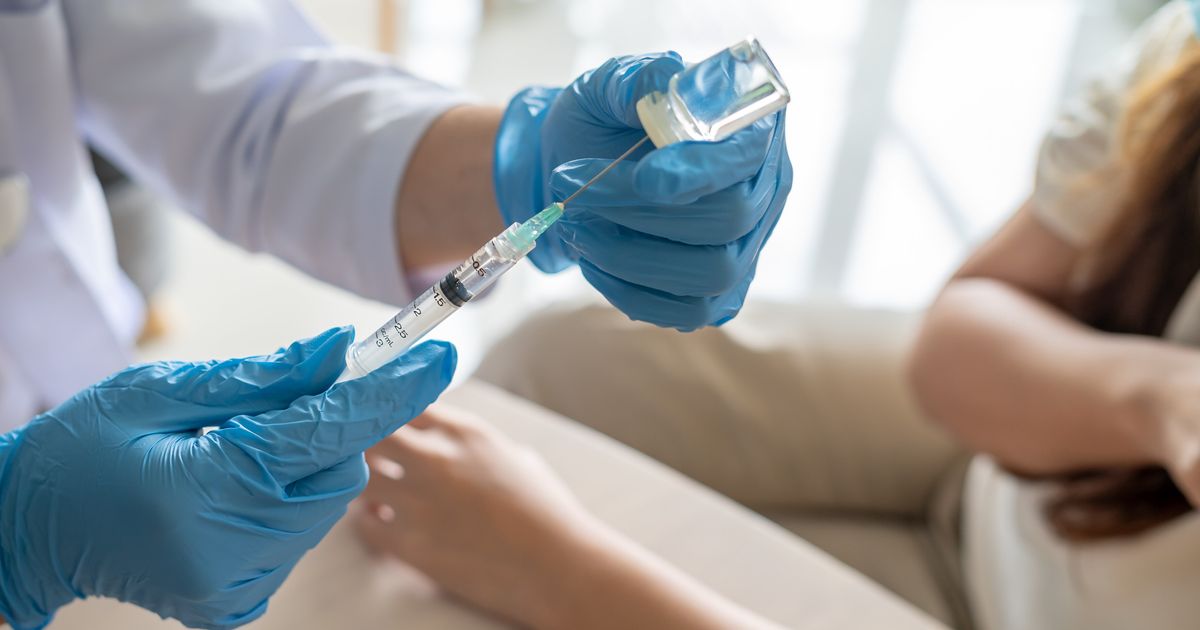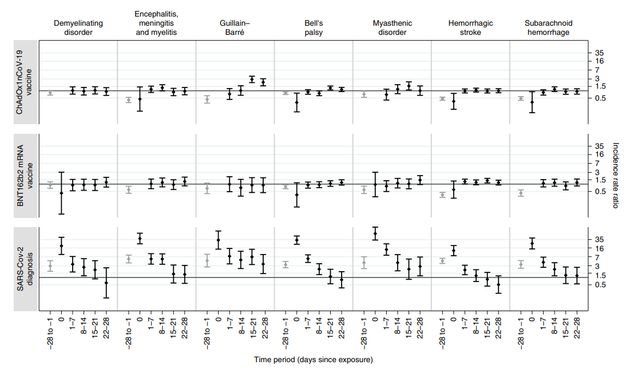simonlong via Getty Images
–
SCIENCE – Almost 10 months after the start of the vaccination campaign, 90% of French people have received at least one dose of a vaccine against Covid-19. As autumn sets in and the coronavirus epidemic is slowly on the rise in France and throughout Europe, the government is wondering how to convince the remaining 10%, especially among the elderly, who have the most risk of suffering from a severe form of Covid-19.
No doubt thestudy published this Monday, October 25 in Nature should be used to clearly articulate the risks and benefits of vaccines, something unvaccinated people say they want more explanations in opinion polls. In this work, researchers analyzed in detail more than 32 million English vaccinees and the neurological adverse effects they may have suffered after an injection.
And the fact is that they found cases, very rare certainly, but very present, in particular of Guillain-Barré syndrome with AstraZeneca, confirming previous more limited analyzes. But the study does not stop there: the researchers also looked among people infected with the coronavirus. And they have found that invariably the risk of neurological complications is much higher when you catch the virus than when you get the vaccine.
“These are probably the largest pharmacovigilance work published on Covid-19,” said Jean-Louis Montastruc, member of the Academy of Medicine and specialist in pharmacovigilance. “This is an interesting publication because it discusses the risk of vaccination versus the risk of disease, or the risk of any intervention must be proportioned to the risk of disease. ”
In their study, the researchers crossed data on English people vaccinated (20 million with Pfizer, 12 million with AstraZeneca) with hospitalization data. They then compared that with 2 million people infected with Sars-Cov2. But also with a “control” cohort, without vaccine or contamination. Objective: to know the risk of a person being hospitalized with a neurological complication in normal times.
The side effects of Covid are worse than those of the vaccine
After numerous statistical checks with “a very good methodology”, according to Jean-Louis Montastruc, the researchers came to the conclusion that a person vaccinated with AstraZeneca has 2.9 times more risk of developing Guillain-Barré syndrome in patients. 21 days after the injection than an unvaccinated person.
Be careful, you have to understand that this risk is basically very, very low. 2.9 times a very low proportion, this remains very low. Thus, the researchers detected 38 cases for 10 million vaccinated. Above all, the risk is multiplied by 5.25 for people infected with the coronavirus. This means that there are 145 cases for every 10 million infected.
A similar phenomenon was observed for Bell’s palsy: a 29% higher risk after an AstraZeneca vaccination, but a risk which, on the other hand, is much higher after an infection with Sars-Cov2.
The graph below, which may seem complex, summarizes this situation well. The three lines represent the AstraZeneca vaccine, Pfizer, then the Covid-19 infection. For each disease tested (the columns), the additional risk compared to the general population is calculated as a function of the time after vaccine injection or contamination.
Clearly, the more the small vertical bars are above the black line, the more the risk is increased. We can see that these bars are generally much higher after the Covid-19 than after the vaccine.
–
Nature / Hippisley-Cox et al.
–
Uncertainties to be resolved
“It is a good complement to pharmacovigilance analyzes which show that there are weak signals of risk of Guillain-Barré, as with all vaccines, and of facial paralysis,” recalls Jean-Louis Montastruc. “The main message is that vaccination prevents a serious disease that we do not know how to treat, not only in its neurological complications but also in all of its other complications”.
These results could be confirmed by the authors by comparing with another cohort of Scottish vaccinated patients. One, however, is unclear. Thus, the only neurological adverse effect with a significantly greater risk than in the general population induced by Pfizer is a risk of stroke. But the authors specify that this increase of 38% was not found in the Scottish cohort. As a result, other more in-depth studies must validate or refute this possible link.
Finally, this study is certainly very detailed and complete, but only deals with neurological complications. It would be useful for similar studies on other complications, in particular cardiac and vascular, to see the light of the precise risk of rare effects already detected, such as myocarditis for the youngest with Pfizer or thrombosis with AstraZeneca.
See also on The HuffPost: the vaccine graph race that shows the French progress
–



